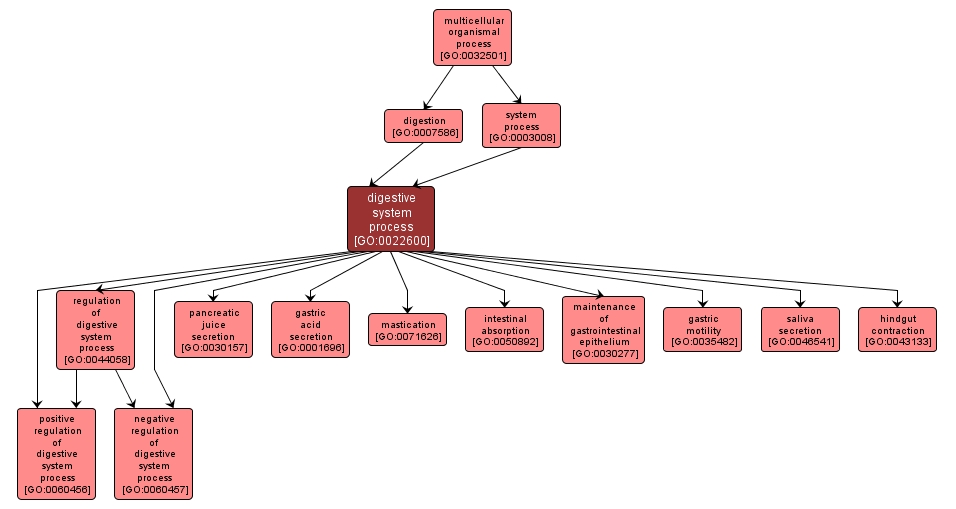GO TERM SUMMARY
|
| Name: |
digestive system process |
| Acc: |
GO:0022600 |
| Aspect: |
Biological Process |
| Desc: |
A physical, chemical, or biochemical process carried out by living organisms to break down ingested nutrients into components that may be easily absorbed and directed into metabolism. |
|

|
INTERACTIVE GO GRAPH
|














